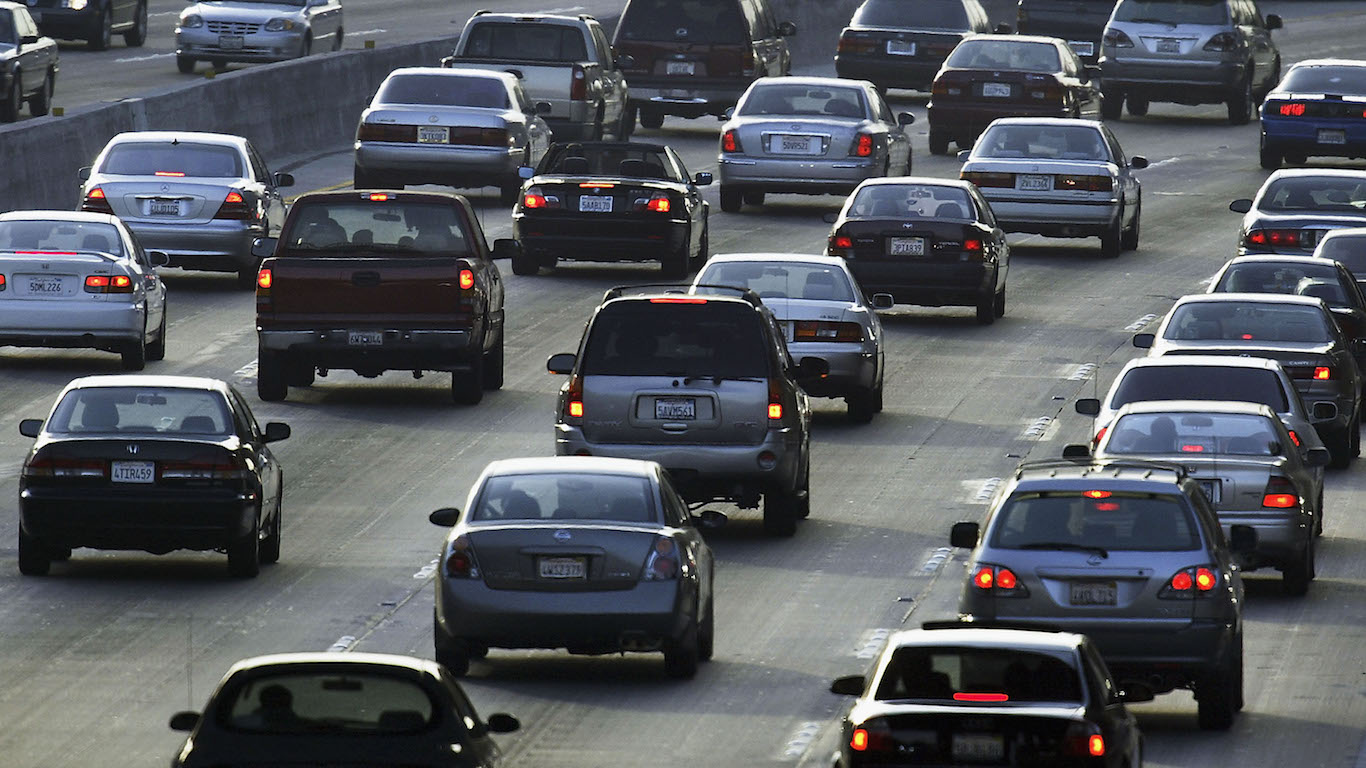
The average price for a gallon of regular gasoline hit $3.997 in San Francisco Thursday morning, according to GasBuddy. Prices are approaching $4 a gallon in several other cities, including Los Angeles ($3.976) and Santa Barbara ($3.971).
The pain is unlikely to end any time soon either. Unplanned outages at four of the state’s 10 refineries could push California’s pump prices even higher.
Earlier this week, GasBuddy’s head of petroleum analysis, Patrick DeHaan, said, “California will soon be home to something not seen in nearly five years: a statewide average of over $4 per gallon, with some of the largest cities there swelling to averages as high as $4.15 per gallon before any relief arrives.”
A fire late last week at the Phillips 66 refinery in Los Angeles has forced the shutdown of one of the plant’s processing units. Earlier in March, a power outage forced the Chevron refinery in Richmond, to flare (burn off) methane in order to relieve pressure in the refining units. Planned shutdowns for maintenance at other refineries in the state also have worked to reduce supply. To make up the losses, California wholesalers import gasoline from other states at a higher cost than they pay when refineries are running normally.
Then there is the 12-cent-per-gallon jump in the state’s gasoline tax that went partially into effect last November and will be completed in July, when state taxes reach 47.3 cents per gallon. Add in a two-cent-per-gallon fee for underground storage tanks and a sales tax of 2.25% per gallon (nine cents a gallon at a price of $4 a gallon) and Californians will be paying a total of 58.3 cents a gallon in state gasoline taxes. Only Pennsylvania, where state taxes total 59.3 cents a gallon, imposes higher taxes on retail sales of gasoline.
California, Oregon, Washington and Nevada are the four Lower 48 states that typically pay the most for gasoline. That’s due to the region’s relative isolation from the major oil-producing regions of the country. Instead of getting pipeline deliveries from North Dakota or Texas, most crude oil that is not produced in the state arrives by tanker at a far higher cost.
California also has stricter pollution emission rules than any other state. That drives up refining costs and adds to the price at the pump. All told, by July, Californians will pay 76.7 cents a gallon in federal (18.4 cents) and state taxes.
How long until the state’s drivers have to suffer these prices? At least another week or two until refineries are once again producing normally, according to DeHaan. As for the rest of the country, the U.S. Energy Information Administration has forecast national average summer gas prices to be nine cents a gallon lower than last summer and gas prices for the full year to be 12 cents lower than last year.
Want to Retire Early? Start Here (Sponsor)
Want retirement to come a few years earlier than you’d planned? Or are you ready to retire now, but want an extra set of eyes on your finances?
Now you can speak with up to 3 financial experts in your area for FREE. By simply clicking here you can begin to match with financial professionals who can help you build your plan to retire early. And the best part? The first conversation with them is free.
Click here to match with up to 3 financial pros who would be excited to help you make financial decisions.
Thank you for reading! Have some feedback for us?
Contact the 24/7 Wall St. editorial team.
 24/7 Wall St.
24/7 Wall St.


